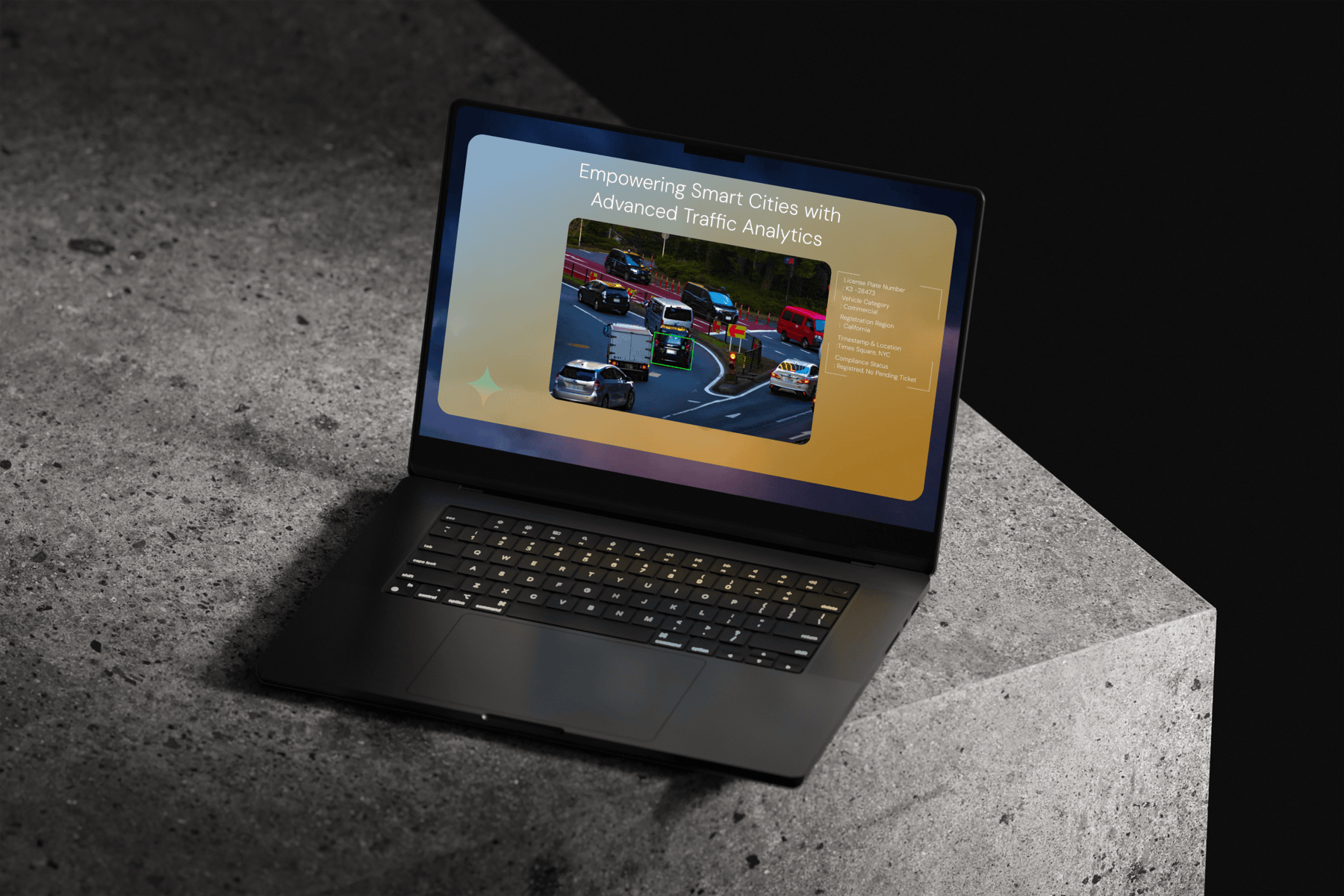
Traffic Analysis
Managing vehicular access and flow within restricted areas poses a significant challenge for organizations and municipalities. Without effective oversight, controlling the number of vehicles, ensuring space availability, and maintaining security becomes complex. Our client recognized the need for a streamlined, intelligent system that could not only verify vehicle entries and exits but also provide valuable insights to optimize parking and traffic operations. To address these challenges, we developed an AI-based Traffic Analysis solution tailored to their specific requirements.
01. The Challenge
The client’s existing setup struggled to maintain efficiency and security due to several key issues:
- Manual Vehicle Verification: Relying on human oversight to identify vehicles led to errors, delays, and potential security gaps.
- Ineffective Space Management: Without real-time data on available spaces, vehicles were granted entry indiscriminately, causing congestion, frustration, and inefficiencies.
- Limited Operational Visibility: The lack of automated control over exit points and minimal video analytics capabilities hindered the client’s ability to gather actionable insights into traffic patterns, dwell times, and occupancy trends.
- Inefficient Decision-Making: With no centralized, data-driven platform, the client struggled to optimize their traffic flow, leading to missed opportunities for improvement and resource allocation.
Overall, the client needed an intelligent, automated system that could accurately identify vehicles, dynamically manage capacity, and enhance overall operational oversight.
02. The Solution
Our team engineered an AI-driven Traffic Analysis system designed to optimize every step of vehicle movement within the designated territory. Key features include:
Automatic Vehicle Identification:
High-definition cameras and advanced computer vision algorithms recognize vehicle license plates as cars approach the entry point. This automated process replaces manual checks, increasing accuracy and speed.Real-Time Space Allocation:
The system maintains a live count of available parking or holding spaces. When a vehicle approaches, the AI verifies if space is available. If it is, the barrier automatically grants access, reducing congestion and improving user satisfaction.Video Analytics for Exits:
As vehicles prepare to leave, the system’s integrated video analytics monitors the exit process. This provides valuable data on exit times, traffic flow, and the efficiency of the territory’s layout.Centralized Dashboard and Reporting:
A user-friendly dashboard consolidates all data—entries, exits, occupancy, and historical trends—into visual reports. Decision-makers can review these insights to optimize staffing, adjust traffic controls, and plan long-term improvements.Scalability and Integration:
The solution is designed to integrate seamlessly with existing infrastructure and can scale to accommodate increased vehicle volume, additional entry/exit points, or even new AI capabilities such as vehicle type classification.
"Effective traffic analysis doesn’t just reveal congestion—it provides the insight and foresight needed to design smarter, safer roads for everyone."
Unknown
03. The Result
Implementing the AI-based Traffic Analysis system delivered transformative outcomes for the client:
- Enhanced Efficiency: Automated entry verification and space management minimized queues and reduced wait times, improving overall vehicular flow.
- Improved Security and Accuracy: Reliance on AI-driven license plate recognition ensured accurate identification, bolstering both security and operational reliability.
- Data-Driven Operations: Comprehensive analytics enabled the client to make informed decisions on policies, staffing, and infrastructure investments based on real-time and historical data.
- Optimized Resource Utilization: By understanding occupancy patterns and traffic flow, the client could strategically allocate resources, improving their return on investment.
- User Satisfaction: Streamlined processes, shorter wait times, and transparent space availability contributed to a better experience for all vehicle users.
Ultimately, the solution transformed the client’s approach to traffic management. With intelligent automation, accurate data, and actionable insights, they now possess the tools needed to maintain efficiency, security, and adaptability in an ever-evolving transportation landscape.